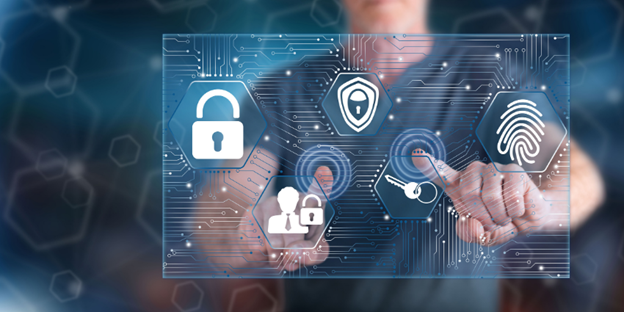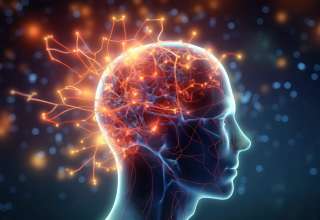
Identity verification is the important process of ensuring that a person is who they claim to be when opening a bank account, applying for a loan, or other financial processes. Though identity verification is an important security measure in combatting new account fraud, Identity verification also plays a role in Know Your Customer (KYC) and anti-money laundering (AML) efforts at financial institutions which assess and monitor customer risk
Understanding Identity Verification
The Rise of Digital Identity Verification
In today’s increasingly digitized world, the necessity for remote and secure identity verification methods has grown significantly. Factors such as rising instances of data breaches, identity theft, and the global shift towards remote working and transactions due to the COVID-19 pandemic have accelerated the adoption of digital identity verification solutions. These solutions leverage cutting-edge technologies like biometric recognition, artificial intelligence, and machine learning to authenticate individuals’ identities without the need for physical presence. This shift towards digital identity verification not only enhances security but also improves operational efficiency and customer experience.
Methods of Digital Identity Verification
Digital identity verification encompasses a range of sophisticated methods and technologies aimed at confirming the identity of individuals remotely. These methods include:
- ID Document Verification: Utilizes advanced algorithms to analyze and authenticate government-issued identity documents such as passports or driver’s licenses.
- Biometric Verification: Compares facial features captured in live selfies with those in ID photos to verify identity.
- Liveness Detection: Employed to ensure that selfies are genuine and not pre-recorded or manipulated, typically by prompting users to perform specific actions.
- Knowledge-based Authentication (KBA): Utilizes personal information derived from credit files to generate security questions.
- One-time Passcode (OTP) Verification: Sends unique codes via SMS or email for verification purposes.
- Trusted Identity Network: Leverages existing credentials from reputable sources to verify identity.
- Database Methods: Utilizes data from social media, offline databases, and other sources to cross-verify submitted information.
ID Document Verification Process
The ID document verification process involves capturing images of identity documents using mobile devices or specialized scanners. These images are then analyzed in real-time using advanced algorithms to detect security features such as watermarks, holograms, and fonts. By comparing captured data against known templates and databases, this process quickly determines the authenticity and legitimacy of identity documents, facilitating swift and secure account openings and transactions.
Benefits of ID Document Verification
ID document verification offers numerous advantages for businesses and consumers alike. By enabling real-time authentication of identity documents, this method streamlines account opening processes, reduces the risk of fraud, and enhances overall security. For financial institutions, ID document verification not only ensures compliance with regulatory requirements but also improves customer satisfaction by offering seamless and secure digital experiences.
Facial Biometrics for Identity Verification
Facial biometrics represent a cutting-edge technology within digital identity verification, allowing for the comparison of biometric data extracted from live selfies with ID photos. This technology employs sophisticated algorithms to analyze facial features, ensuring that the individual presenting the ID is indeed the legitimate holder. Facial biometrics enhance security by detecting and preventing impersonation, thereby safeguarding against identity-related fraud.
Benefits of Biometric Verification
Biometric verification provides an additional layer of security by confirming the identity of individuals beyond traditional methods. By leveraging facial comparison and liveness detection, biometric verification mitigates the risk of fraudulent activities such as using stolen or manipulated identity documents. This technology enhances trust and confidence in digital transactions while offering a seamless user experience.
How Liveness Detection Works
Liveness detection is a critical component of facial biometric verification, ensuring the authenticity of selfies captured during identity verification processes. This feature prompts users to perform specific actions, such as blinking or smiling, to prove their live presence and prevent the use of static or pre-recorded images. Liveness detection significantly enhances the accuracy and reliability of identity verification, providing robust protection against spoofing and fraudulent attempts.
Use Cases of Identity Verification
Identity verification serves a wide range of use cases across industries, including remote account openings, automated passport controls at airports, and real-time fraud detection. By leveraging digital identity verification technologies, organizations can enhance operational efficiency, improve regulatory compliance, and build trust with customers.
The Importance of Digital Identity Verification
Digital identity verification is instrumental in enabling secure and seamless digital transactions while protecting businesses and consumers from identity-related fraud and financial crimes. By adopting robust identity verification solutions, organizations can uphold regulatory standards, mitigate risks, and foster a secure digital ecosystem.
Identity Verification Regulations and Standards
Regulatory frameworks such as AML5 and CIP (Customer Identification Program) establish guidelines and standards for the implementation of digital identity verification solutions. Compliance with these regulations is essential for financial institutions and businesses to combat money laundering, terrorist financing, and other illicit activities effectively.
The Future of Identity Verification
Looking ahead, the future of identity verification lies in the continued advancement of technologies like machine learning and artificial intelligence. These technologies will enable organizations to deploy multi-layered identity verification solutions capable of adapting to evolving threats and regulatory requirements. By investing in innovative identity verification services, businesses can enhance security, build consumer trust, and drive growth in the digital economy.
Conclusion
Identity verification plays a pivotal role in ensuring security and trust in today’s digital world. By leveraging innovative technologies and robust verification methods, businesses and institutions can effectively combat fraud, protect against identity-related crimes, and enhance regulatory compliance. As we move forward, continued investment in identity verification solutions will be essential to adapting to evolving threats and maintaining the integrity of digital interactions. Ultimately, the adoption of secure identity verification practices is fundamental to fostering a safe and trustworthy digital ecosystem for businesses and consumers alike.




























